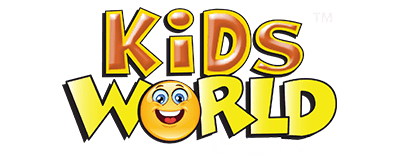Explore Effective Language Teaching Approaches Used Worldwide
Language is the most optimal mode of communication. It is the unique factor that distinguishes human beings from animals. Language teaching is one of those areas of human enterprise that will never go out of demand. Language teaching is conducted in a variety of methods. Each method has its own language learning philosophy.
1. Communicative language Teaching (CLT)
In Communicative Language Teaching approach, the learner is introduced to real life situations. The learner is expected to develop fluency in the target language. Much more than accuracy. Lessons are hands-on rather than theoretical. In a CLT classroom the instructor might enact a role play in which one learner is a customer and another is a shop keeper. Such real-life scenarios are expected to develop language proficiency in students.
2. Task-Based Language Teaching (TBLT)
Task-Based Language Teaching (TBLT) is about using the completion of a task to teach language. Learners use the language they already know to complete a task. They work through pre-task, the task itself and post-task. For example, students might be asked to do a presentation on an important social issue. They might be asked to read up on the topic, do internet search, write up and deliver the presentation. After the presentation, they are asked to reflect on their performance.
3. Content and Language Integrated Learning (CLIL)
The Content and Language Integrated Learning (CLIL) approach involves studying a subject (for example, biology or history) and learning a language, such as English, simultaneously. The language learning is centred around the demands of the subject rather than the language. This approach is particularly useful for students who may not have the motivation to learn the language in the first place. Since they are motivated to learn the subject, they learn the language too.
4. Cooperative Language Learning (CLL)
Cooperative Language Learning or CLL makes use of cooperative activities involving pairs and small groups of learners in the classroom. It is student-centered, rather than teacher-centered. Students learn the target language through social interactions. The teacher is just a facilitator.
5. The Direct Method
The Direct Method is the most brutal of them all! The teacher does not translate anything into the learner’s native language. All teaching happens in the target language and the learner is forced to think and speak in that language. Native language is not allowed to be spoken.
6. Grammar-Translation
Grammar translation method is one of the most traditional of language teaching approaches. The modus operandi is to translate from students’ mother tongue into the target language and vice versa. Typically, students memorize long lists of vocabulary, grammar rules and formats. It is best suited to the development of reading and writing skills; not communicative or speaking skills. Classroom activities usually centre around grammar drills and vocabulary tests.
7. Audiolingualism
Audiolingualism evolved as a response to some of the problems associated with grammar translation. Classes are usually held in the target language and the focus is on speaking and listening skills. Typically, students repeat teacher’s words either face to face or in a language lab till they get the rhythm and pronunciation correct. Good work is praised and errors quickly corrected.
8. Total Physical Response
Total Physical Response or TPR is a way of language teaching in which the teacher presents language as sets of instructions and the students have to do what the teacher tells them. Instructions are typically simple to begin with. ‘Sit down’, ‘stand up’, ‘point to the clock’, ‘give me a pen’, ‘walk to the front of the class etc. are examples of instructions used in the beginning of a TPR class. As students improve, instructions become more complex. For example, adverbs may be added (e.g. walk quickly).
9. The Silent Way
As the name suggests, the teacher does not say much in this type of language teaching. The focus is squarely on the learner. Teachers employ gestures and facial expressions to communicate. Props also might be used.
10. The Natural Approach
The natural approach advocates mastery of language by acquiring it rather than learning it. This means that there is no structure to the language teaching or learning. The teacher creates an environment which immerses students in the target language. There is repetition, correction and recall of what students learn. There is no conscious drilling of grammar rules in this approach. Teachers use interesting and comprehensible input in low-stress situations.
Related reading: Teacher Resources



